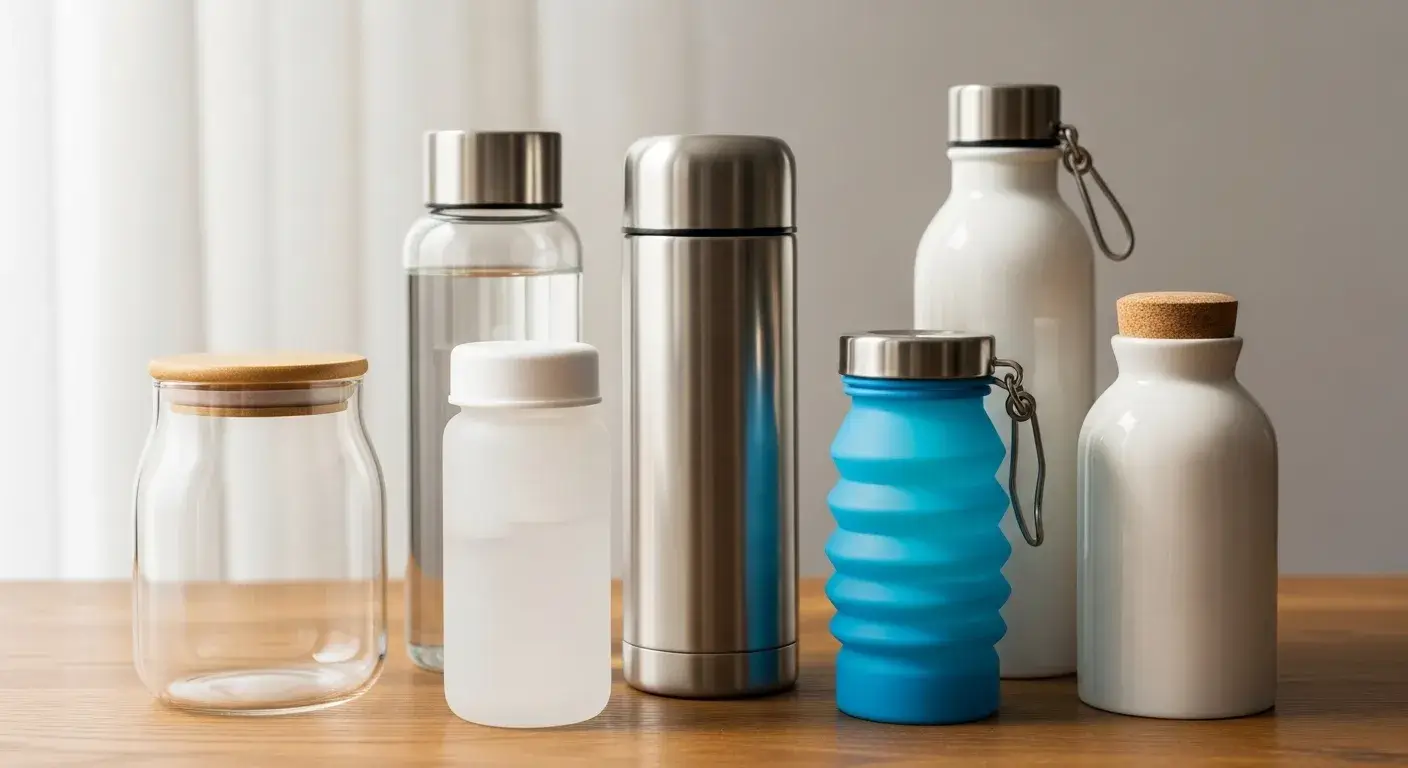
Tired of hidden plastics in your water bottles? Here’s your guide to finding truly plastic-free options.
Plastic-free water bottles are made from stainless steel, glass, bamboo, ceramic, and silicone — without plastic lids, liners, or seals.
Keep reading to find out how to make a safe, sustainable switch.
Why Avoid Plastic in Water Bottles? Health and Environmental Reasons
Plastic can leach chemicals like BPA or microplastics into your drink and cause long-term pollution.
Plastic-free bottles1 help reduce toxic exposure and environmental waste.
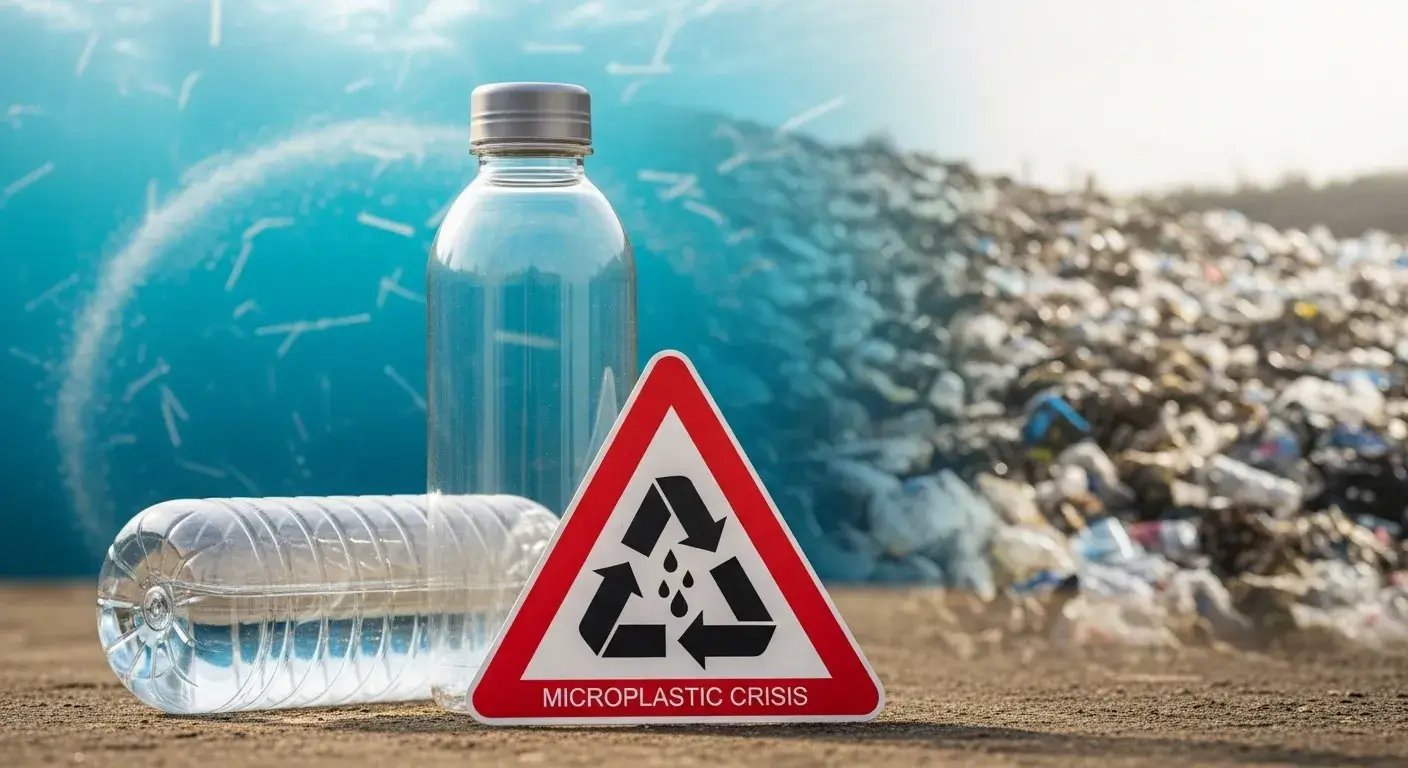
Top Water Bottle Materials That Are 100% Plastic-Free
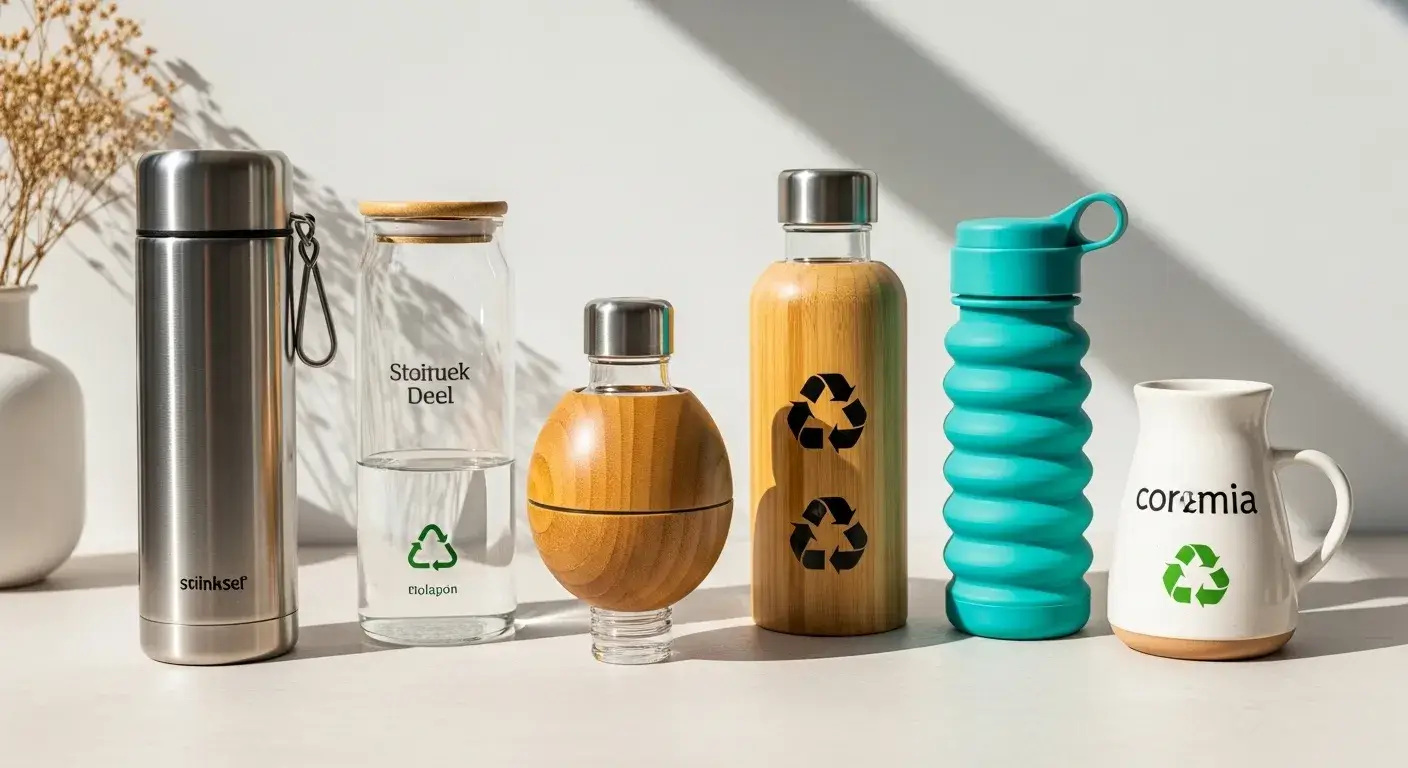
Stainless Steel Bottles
- Non-toxic, durable, and fully recyclable.
- Often come with metal or silicone lids.
Glass Bottles
- Pure and chemical-free.
- Recyclable and maintains taste quality.
Bamboo Bottles
- Natural and biodegradable.
- May use bamboo outer shell with a steel or glass interior.
Silicone Bottles
- BPA-free and flexible.
- Lighter and collapsible; ideal for travel.
Ceramic Bottles
- Heat-insulating and inert.
- Often used for tea or home use.
Plant-Based Biodegradable Bottles
- Made from sugarcane or PHA.
- Compostable under industrial conditions.
Aluminum Bottles (With Plastic-Free Lids)
- Recyclable and lightweight.
- Only fully plastic-free when combined with metal or silicone lids.
How to Identify Truly Plastic-Free Water Bottles
Read product labels carefully. Check all components: bottle, lid, seal.
Look for “BPA-free2,” “100% plastic-free,” or silicone/metal lid descriptions. Avoid hidden plastic in seals.
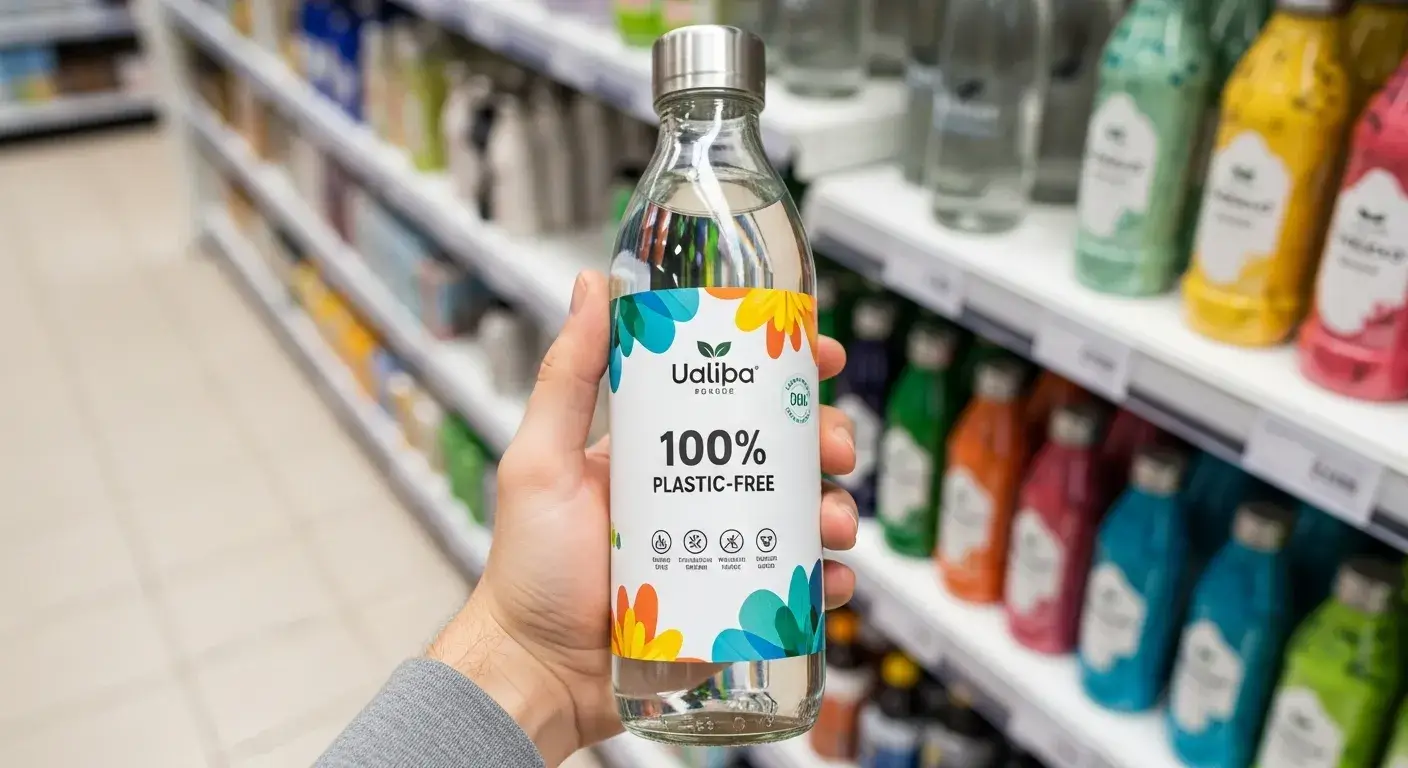
Verification Tips
- Search for third-party certifications.
- Avoid vague terms like “eco-friendly” without specific materials listed.
- Read user reviews to check for plastic components.
Pros and Cons of Plastic-Free Water Bottle Materials
| Material | Pros | Cons |
|---|---|---|
| Stainless Steel | Durable, recyclable, leak-proof | Can dent, heavier |
| Glass | Pure taste, recyclable, inert | Fragile |
| Bamboo | Natural, biodegradable | Requires drying, prone to mold |
| Silicone | Flexible, BPA-free, portable | Less durable, not heat-safe |
| Ceramic | Stylish, chemical-free | Fragile, heavy |
| Plant-Based | Compostable, renewable | Not reusable, needs facilities |
| Aluminum | Recyclable, light | Often has plastic liners |
How to Maintain and Care for Plastic-Free Water Bottles
- Wash regularly to prevent mold and buildup.
- Air-dry bamboo and silicone fully after use.
- Avoid dishwashers for bamboo or ceramic.
- Store glass and ceramic bottles carefully to prevent breaking.
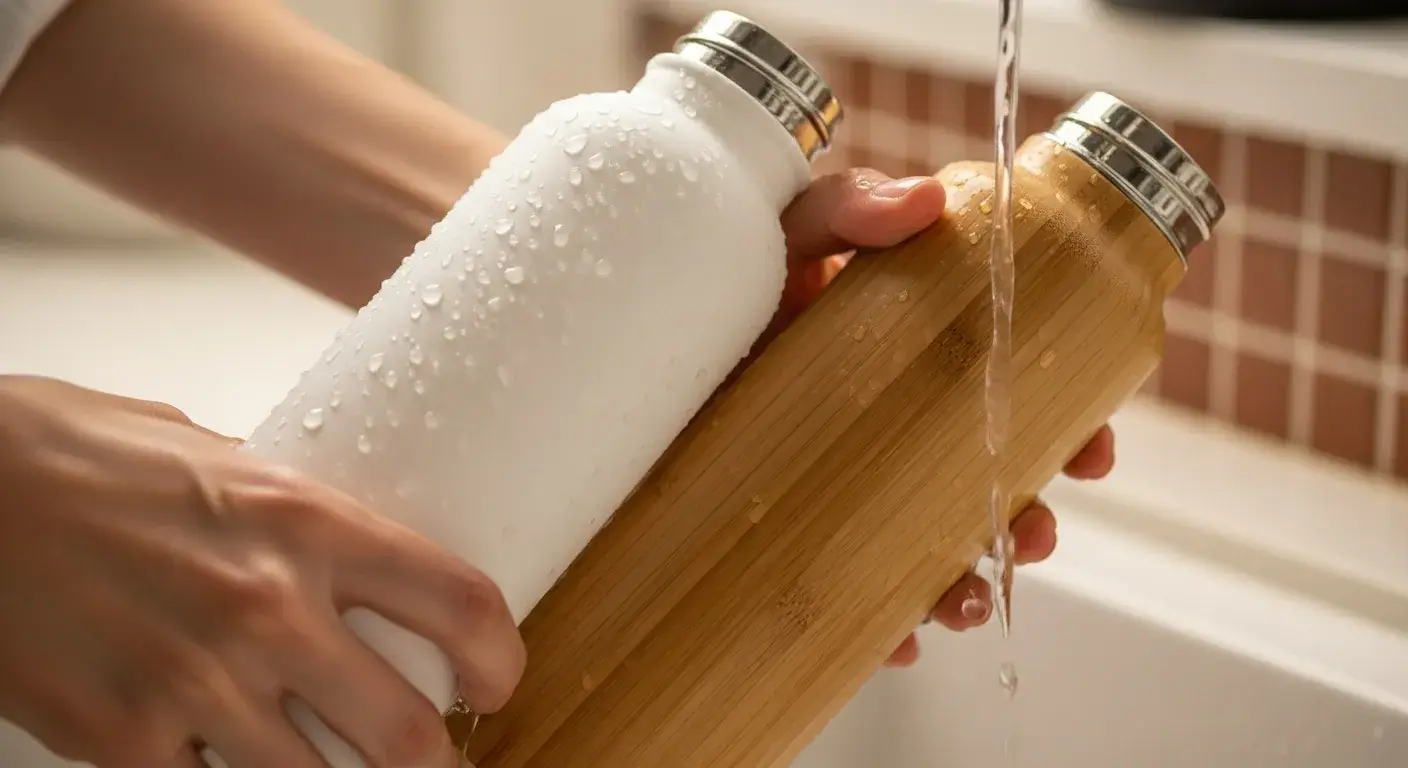
Are Plastic-Free Water Bottles Better for the Environment?
Yes, especially when reused over time. They reduce plastic pollution and chemical leaching.
Environmental impact depends on the material’s sourcing, recyclability, and lifespan3.

Green Ranking (Durability x Recyclability)
- Stainless Steel
- Glass
- Silicone
- Aluminum (with care)
- Bamboo
- Ceramic
- Plant-Based (single-use only)
Conclusion
Choose a plastic-free bottle that fits your lifestyle—durable for travel, pure for daily use, or biodegradable for single use.
FAQs
Are stainless steel bottles 100% plastic-free?
Yes, if paired with silicone or metal lids—check for plastic seals.
Is silicone considered plastic-free?
Yes. Silicone is a rubber-like material, not plastic, and it’s BPA-free.
Can bamboo bottles leak or mold?
If not dried properly, yes. Clean and dry after each use.
What’s the safest plastic-free bottle for kids?
Silicone or stainless steel with a soft-top lid works best.
Are plant-based bottles reusable?
No. They are typically compostable single-use items, not durable for reuse.

